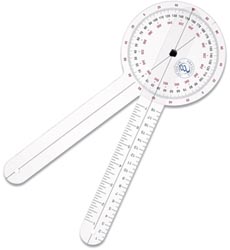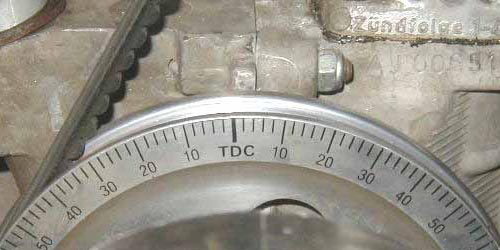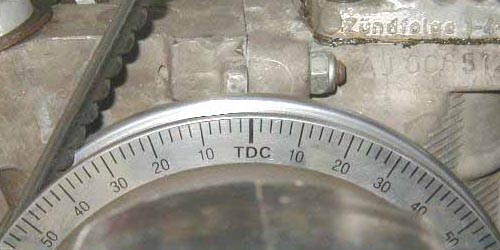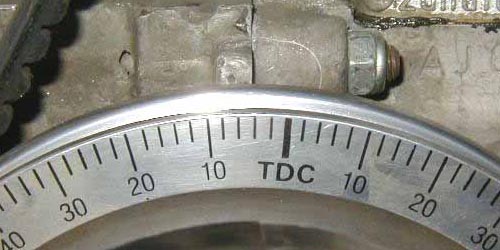Contact:
Volkswagen Timing

Volkswagen Timing
Correct engine timing is crucial for getting top performance and life out of your engine. And if your ignition timing is off, your engine's life and performance will suffer. If you engine's ignition timing is retarded too much, you will have a hard time getting your engine to idle, have pronounced "flat spots" during acceleration and have a loss in overall power. If your engine's ignition timing is advanced too far, you'll experience "pre-detonation" which can destroy your engine in no time. It is therefore imperative that you set your VW timing as accurately as possible.
Timing Setting
VW timing recommendations are a often based on your VW's year and model. And if everything in your VW is original and well maintained, this should be fine. But if you are the third owner, and have no idea what your VW came nor what "upgrades" have occurred over the years, you will first need to determine what distributor you are running. Visit The Old Volks Home - Distributor Interchange Bosch To VW Number and look up the part number on your distributor. Then check out the applications and Distributor Parts & Specifications to include the timing recommendations.
If you are running a Bosch 009 "performance" distributor, you will need to set the timing at 30 (32 max) degrees at 3000 RPMs.
Marking Pulley
It is entirely possible that you don't have a pulley that matches your distributor and are confused about the markings on your pulley. The first thing to do may be to invest in a laser engraved pulley with degree marking on it. These are great for setting ignition timing, adjusting your valves and they look sharp to boot. Do note that a few low quality ones are marked incorrectly.
If you don't want a fancy modern pulley, you should visit Finding Top Dead Center/Crankshaft Pulley and figure out where TDC is. At TDC for the #1 piston, your crank pulley key should be facing the 9 o'clock position.

Goniometer
Once you find TDC, you can either confirm the marking on your pulley or mark new ones. The easiest way to go about this is to use a goniometer, which is fancy "protractor" for measuring angles. If you don't have access to one of these tools, you can use simple math to find measurements on your pulley.
Finding Degrees:
| Arc Length: |
Radius =
Degrees =
|
|
| Pulley Diameter: | ||
| Angle in Degrees: | ||
Finding Arc Length:
| Angle in Degrees: |
Radius =
Arc Length =
|
|
| Pulley Diameter: | ||
| Arc Length: | ||
Static Timing
Static timing is a poor man's way of setting your timing. It can be done with light probe or voltmeter and allows you to get to a safe start point, such as when you are setting up your engine for the first time or swamping in a spare distributor while on the road.
If you are setting timing on a new engine, you will need to reset it later on after it's warmed up and you have completed your initial break-in. If you are setting timing on an "old" engine, you should run it to operating temp prior to setting timing.
Tools needed for Static Timing:
Static Timing Steps

5 Degrees BTDC

TDC

5 degrees ATDC
Strobe Timing Your Engine
Once you have determined that your distributor is within specs and functioning properly, then it's time to set the timing. Once you get to static timing set, grab a timing light and get to work.
Tools needed for Strobe Timing:
Strobe Timing Steps
Depending on your distributor and engine, you may need to set timing at various depending on engine RPMs. If you are provided with different timing set points and don't have a computerize ignition system, you should set your timing to Total Advance or at the highest RPM spec you are provided with. For a Bosch 009, you will want to set timing to 30 degrees BTDC at 3,000 RPMs.
If you experience any pre-detonation (pinging), retard your timing a degree or two and test drive it again. Repeat this until you have good power without pre-detonation.
Nate's - Timing Your VW Engine
Please feel free to link to this site so that others can find it. It's easy to link to this site, just copy one of the texts below onto your web page:
Copyright © 2000-2010